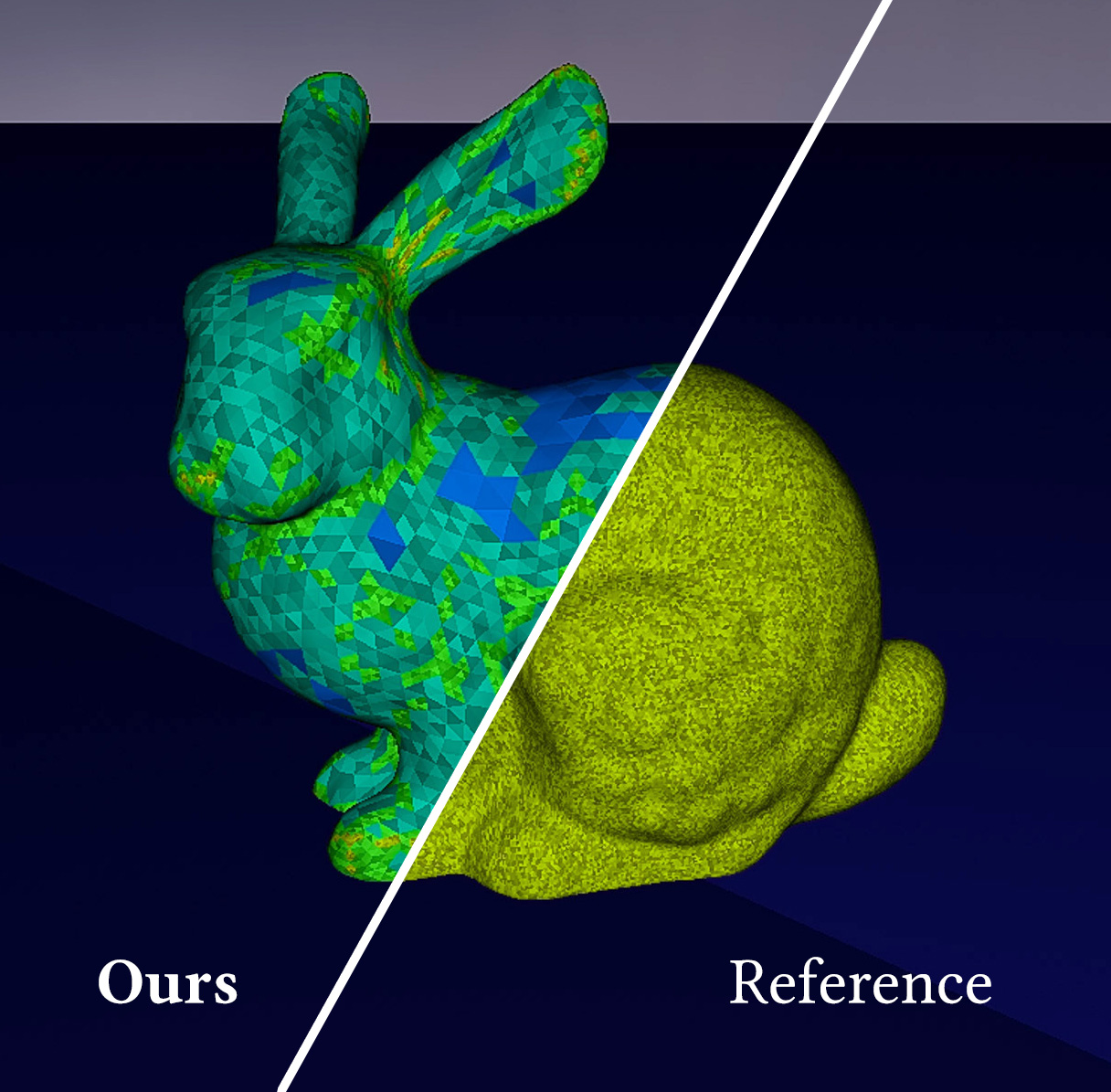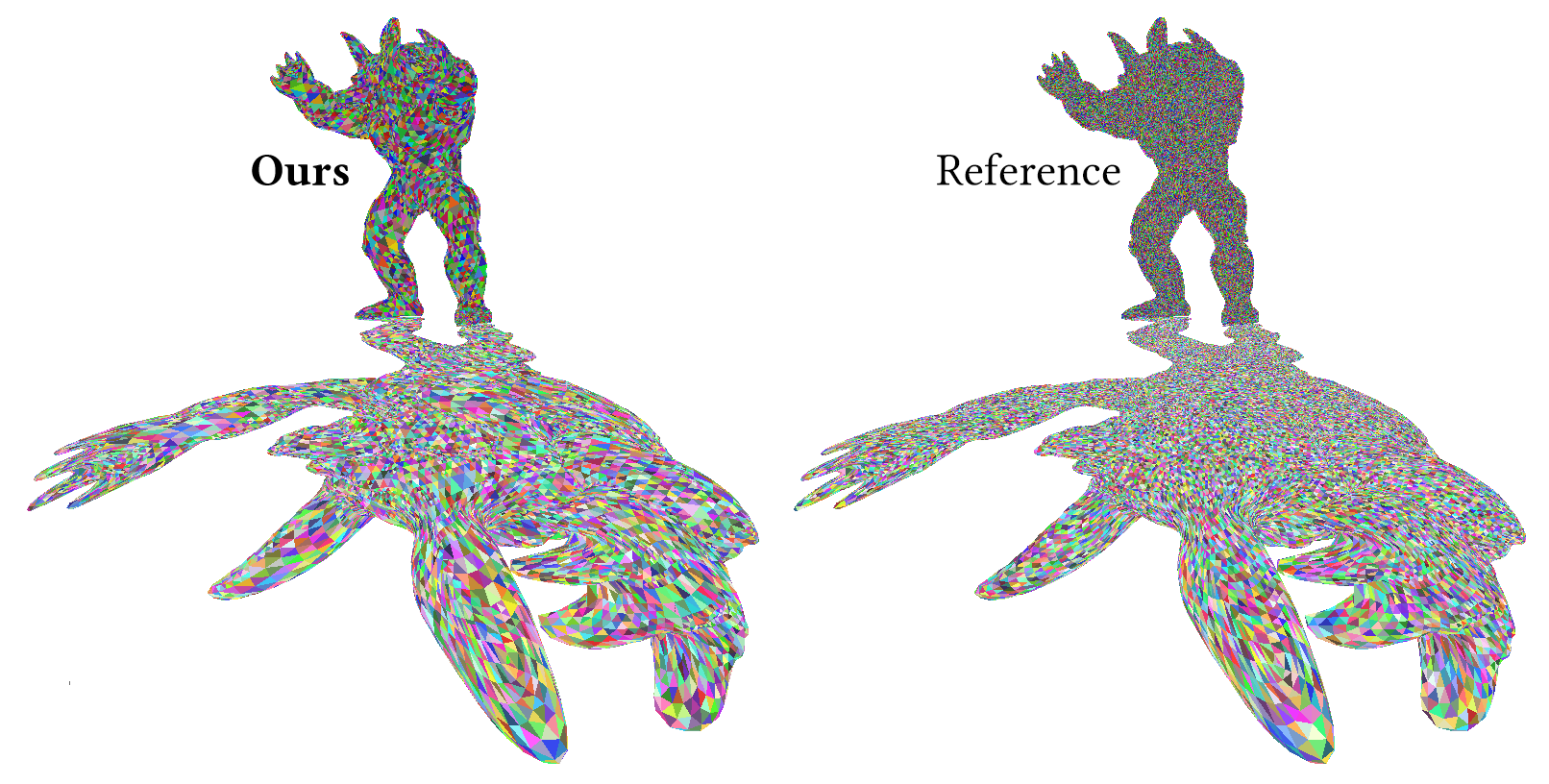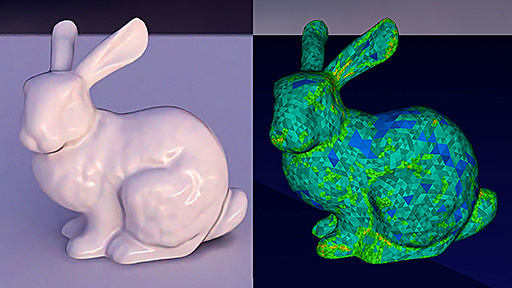Locally-Adaptive LOD for Hardware-Accelerated Ray Tracing


We introduce an adaptive level-of-detail (LOD) technique for ray tracing triangle meshes that aims to reduce the memory bandwidth used during ray traversal, which can be the bottleneck for rendering time with large scenes and the primary consumer of energy. We propose a specific data structure for hierarchically representing triangle meshes, allowing localized decisions for the desired mesh resolution per ray. Starting with the lowest-resolution triangle mesh level, higher-resolution levels are generated by tessellating each triangle into four via splitting its edges with arbitrarily-placed vertices. We fit the resulting mesh hierarchy into a specialized acceleration structure to perform on-the-fly tessellation level selection during ray traversal. Our structure reduces both storage cost and data movement during rendering, which are the main consumers of energy. It also allows continuous transitions between detail levels, while locally adjusting the mesh resolution per ray and preserving watertightness. We present how this structure can be used with both primary and secondary rays for reflections and shadows, which can intersect with different tessellation levels, providing consistent results. We also propose specific hardware units to cover the cost of additional compute needed for level-of-detail operations.We evaluate our method using a cycle-accurate simulation of a custom ray tracing hardware architecture. Our results show that, as compared to traditional bounding volume hierarchies, our method can provide more than an order of magnitude reduction in energy use and render time, given sufficient computational resources.

Secondary rays of our method can properly pick the LOD level that would maintain the quality of the secondary effects, such as shadows. This visualization shows the final triangles intersected. With our method, part of the shadow that is close to the camera uses higher resolution, while the rest of the shadow and the model use lower-resolution tessellations.
Paper Video

